Today, let’s talk about footlights. When we need to get up or stay up late and don’t want to turn on the main light, we can rely on footlights. Its soft light can illuminate any place in the space, such as the aisle, bedside, etc., according to different switching modes, one by one, switch on and off as you move forward.
What are footlights? In the field of lighting, the foot lamp should be called the wall lamp, and it is more appropriate to install it indoors at a distance of 0.3M from the ground. The light sources usually used are energy-saving lamps and incandescent lamps. With the advancement of technology, a large number of LED lamps have been used as their lighting sources. It emits soft light, no radiation, low failure rate, easy maintenance, low temperature rise, long life, low power consumption, protection grade IP64, red, yellow, blue, green, white, colorful discoloration, using cast aluminum, Materials such as tempered glass are used as raw materials.

Foot lights are also called step lights and night lights in the lighting area. They are widely used in home improvement, commercial lighting and other fields. They are generally installed in stairs, aisles, doorways, children’s rooms, elderly rooms, parking lots, gyms and other places for people at night. It is used for a small amount of activities, such as going to the bathroom. If you turn on ordinary lights at night, it will affect others’ rest, but foot lights will not. There are general hospital wards. It is also suitable for squares, gardens, street lighting, etc.
The foot lamp has the advantages of soft light, no eye damage, small applause, convenient maintenance, fast heat dissipation, long life, energy saving and environmental protection. Nowadays, the design of mainless lights is becoming more and more popular, and the application of auxiliary light sources in home decoration is also expanding, such as spotlights, downlights, line lights, and foot lights, which can enrich the light and shadow of the space.
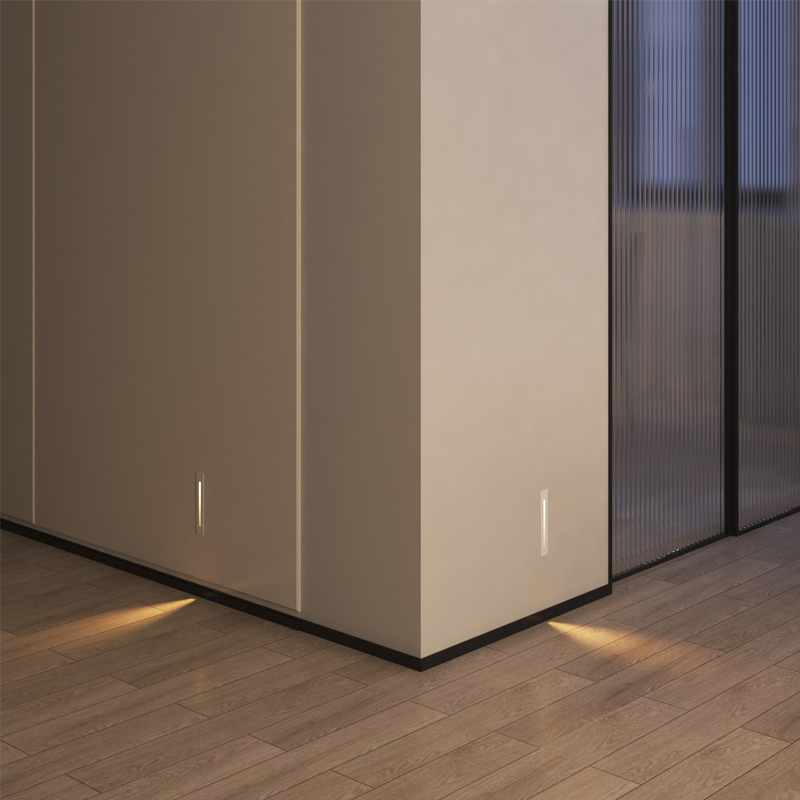
I. What are the features of the foot lamp?
- Small size and low power consumption.
- The LED light source has a long life, and there is almost no need to change the light bulb without any accident. It can be used for several years after one construction.
- Low power consumption, no need to pay high electricity bills for lighting and beautification.
- Anti-leakage, waterproof, dustproof, pressure-resistant and corrosion-resistant.
- Rugged and durable, easy to install and easy to maintain.
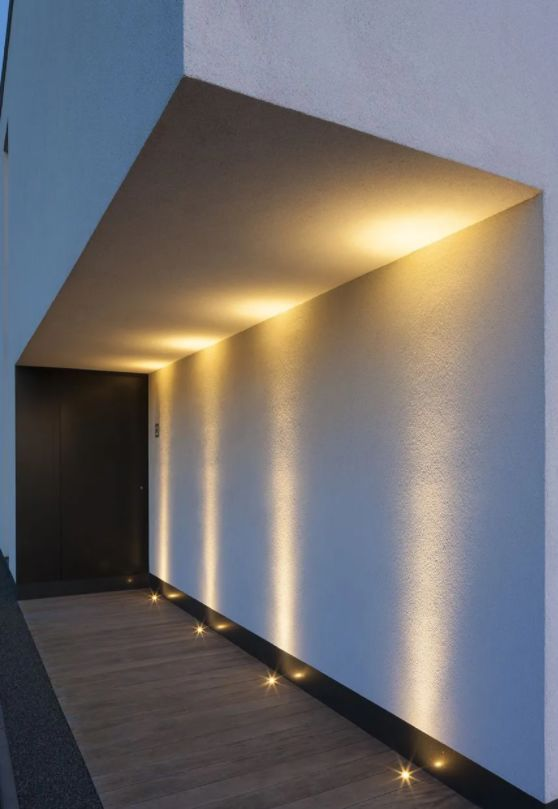
II. What are the advantages and disadvantages of foot lamps?
Whether it is in terms of illuminance or brightness, the foot lamp cannot be used as the main light, and can only be used with other light sources for local lighting. There are 4 reasons why it is necessary to install footlights in your home.
Advantages of foot lamps
1. Good Security
When decorating, many householders may consider: Is it necessary to install foot lights? Especially when there are elderly people at home, this is for safety reasons. Think about it. At night, when the elderly think of drinking a glass of water or going to the toilet, they need to slowly fumble for the switch to turn on the light. The strong light shakes the head, and it is easy to trip if you don’t look at the light, and it will also affect the rest of the rest of the family. The foot lamp is relatively convenient, especially the current microwave induction LED foot light is more useful. It can be automatically sensed according to the position of the human body (6-8 meters), so it is safe and convenient. Moreover, the light of the LED foot lamp is very soft and not dazzling.
2. Strong Practicality
Practicality is a highlight of the foot lamp. It adopts the latest radar sensing technology. The light is on when people come, and the light is off when people leave, and the sensor will not be triggered when the light is relatively bright. It is not bright during the day and it is bright at night, and no useless lighting is used to waste electricity. It is not only smart but also more energy-saving.
3. Low Power Consumption
The power of most foot lamps is very low, and they are generally made of low-power LED foot lamps. Even if they are lit overnight, their power consumption is much lower than other lamps.
4. Be More Targeted
For partners who often stay up late and get up late, or families with children and the elderly at home, foot lamps are the most suitable for night lighting, which can increase safety.
Everything has advantages and disadvantages, and since there are advantages, there are bound to be disadvantages. What are the disadvantages of foot lamps?
Disadvantages of foot lamps
1. Low Brightness
If the home is designed without a main lamp, it is definitely not enough to simply use it for lighting. It must be used in conjunction with 2~3 or more lamps to meet the needs of daily life.
2. Small Irradiation Range
Generally speaking, the foot lamp will be installed on the aisle passing by the foot, and the illumination distance is relatively short, resulting in a relatively small range of illumination.
3. Easily Disturbed
Inductive footlights are prone to interference. Interference sources include heat sources, light sources, radio frequency radiation, thermal airflow, and more.
4. Low Penetration
The penetration ability of the induction foot lamp is not strong, and the infrared radiation of the human body is easily blocked.
5. Short-term Failure Phenomenon
Induction footlights sometimes have short-term failures, such as when the ambient temperature is close to the human body temperature, which will cause detection and sensitivity to drop. When people stay still in the range for a long time, they may malfunction due to less infrared radiation.
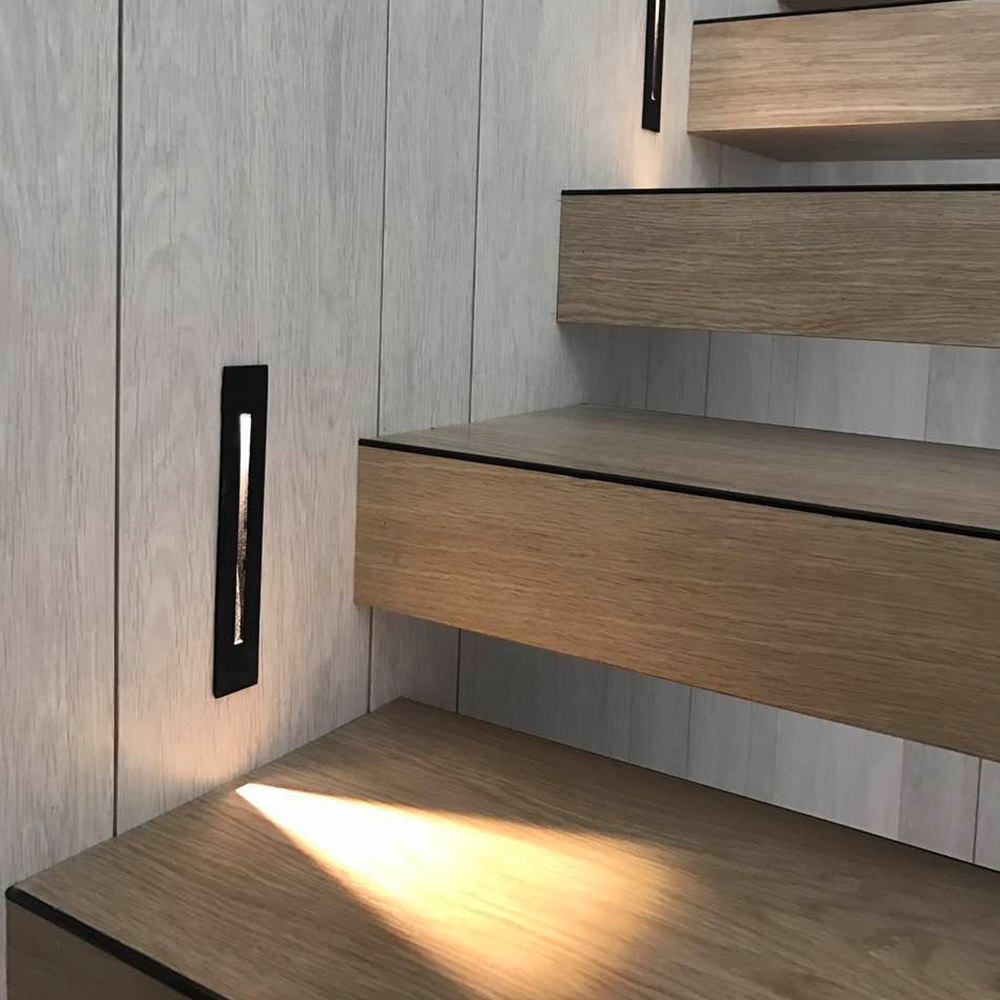
III. What types of foot lamps are there?
Foot lamps are also constantly developing and upgrading. There is not only one way of lighting, not only voice control, light control, but also human infrared and other types. Different types and performances can be selected according to their own usage habits.
Switch Panel Foot Light
The general LED foot lamp is planned in the process of designing the socket. Like other lamps in the space, they are all on the same switch panel. After the fixed position switch, the foot lamp remains on or off.
Light Control Foot Lamp
The light-controlled floor lamp is a lamp that is not lit when it is bright during the day, and only lights up at night when it is dark. It is a lamp that adjusts itself according to the strength of the light perception. This kind of floor lamp can usually be installed later or use a smart switch panel to control.
Voice-activated Foot Lamp
Everyone is familiar with this type of voice-activated LED footlights. The footlights are turned on or off through sound, such as clapping, speech or footsteps. When the volume reaches a certain level, the installed footlights can be turned on.
Infrared Induction Foot Lamp
Compared with the above-mentioned, infrared sensor floor lamps are used more widely and are more intelligent. The infrared sensor foot lamp can sense the infrared spectrum of the human body through the built-in sensor and photosensitive element of the lamp, so as to control the lamp, it will turn on when it comes and go off, which is more power-saving and user-friendly.
IV. Application of foot light in space
Bedside
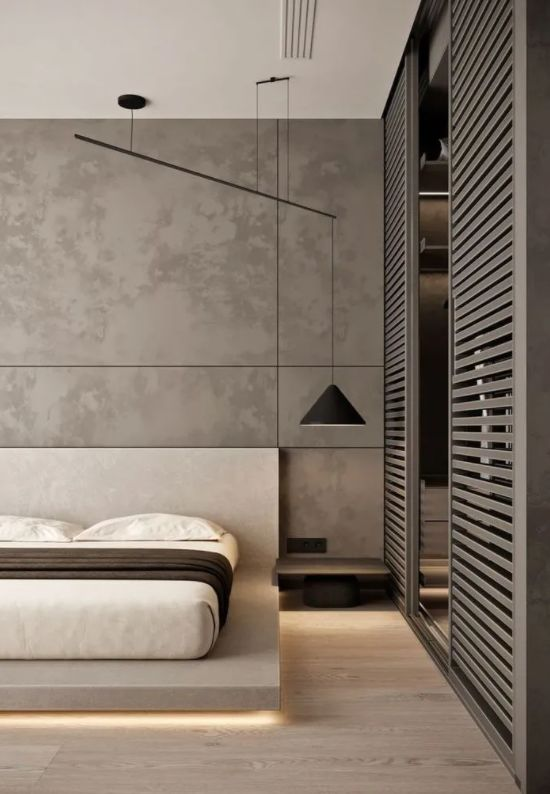
Excellent bedroom lighting design can make the atmosphere more warm and soft, and help residents sleep better. When brewing drowsiness, reading, and swiping mobile phones, too bright lights are not needed. It is a very wise choice to install foot lamps around the bed. The lighting is gentler and less dazzling. It is very convenient to go to the bathroom or drink water at night.
Aisle
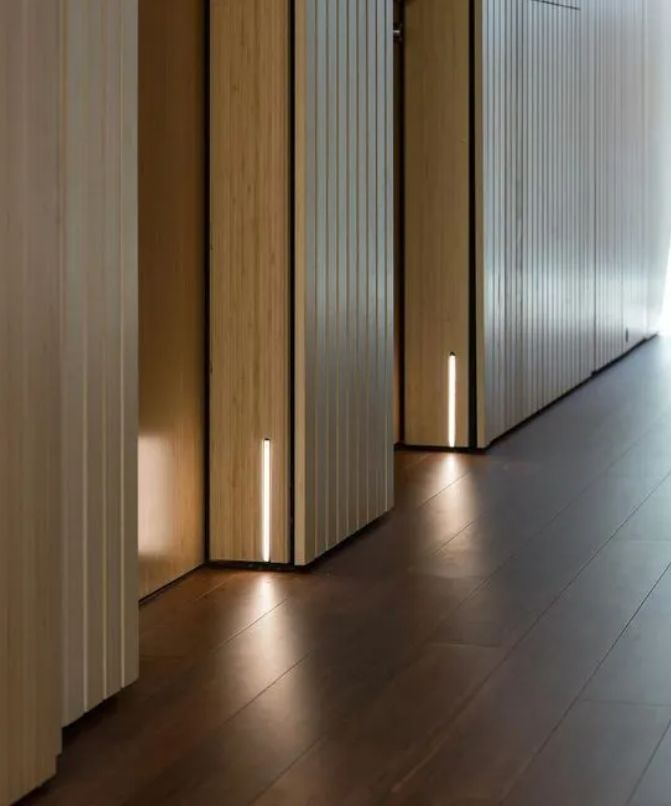
When many partners set the lighting layout for their homes, they often ignore the aisles and corridors, thinking that a chandelier or wall sconce is enough. If it is designed in this way, when you pass through the bedroom, bathroom, and living room at night, you will look for the switch with a black eye, and the luminosity of the headlight will be relatively high after turning on the light, which will make sleepiness dissipate. It is recommended to install LED footlights in the corridor or aisle area, which can well avoid the above problems. Even at night, footlights can help you illuminate.
Stairs
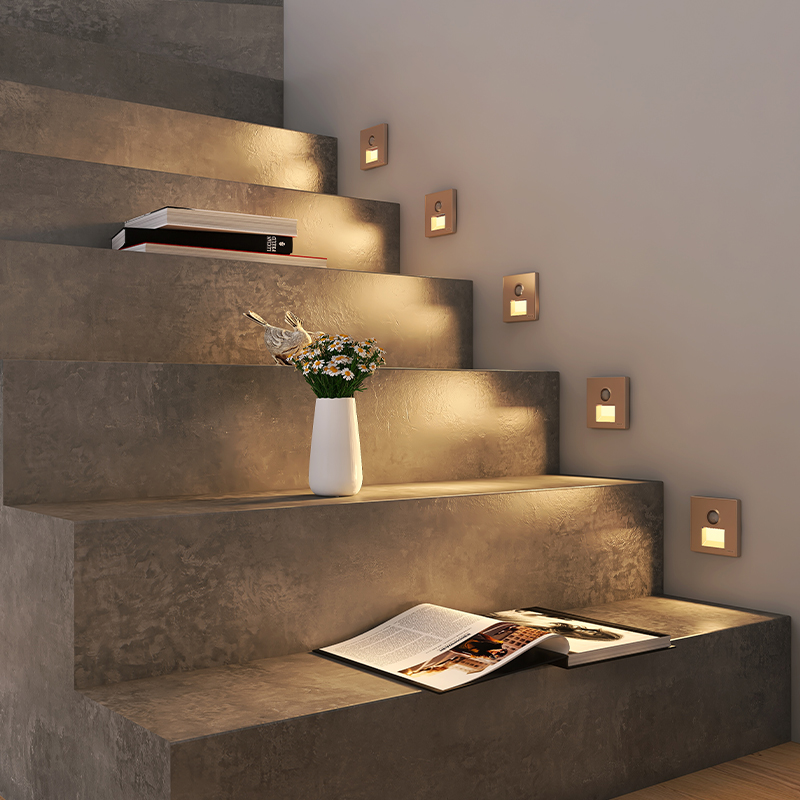
Foot Light For Stairs
The stairs meander up and are generally long and narrow. It is difficult for ordinary lights to fully illuminate this area, but when the light in the space is not good, there is a risk of stepping into the air. After the foot lamp is installed, it can be distributed on the wall of each step along the stairs, providing residents with a full sense of security, and at the same time creating a very elegant aesthetic. The advantage of using the foot lamp is that it can be distributed on the wall of each step along the stairs, giving you enough safety while also showing a more advanced aesthetic.
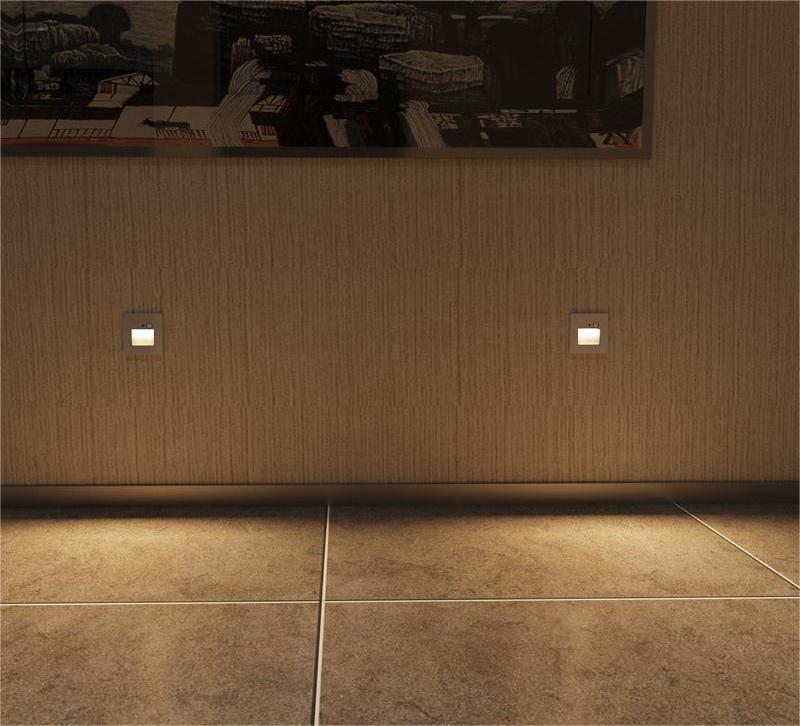
V. Installation guidelines for induction foot lamps
Where are the induction foot lights installed?
1. The induction floor lamp can be installed on the floor of the bedroom or in the passage leading to the bathroom, so as to minimize the disturbance to the family and ensure the sleep of the family.
2. The induction floor lamp can also be installed on the stairs, which can ensure that you will not fall down when walking down the stairs at night because the environment is too dark.
3. The sensor foot lamp should be installed at a height of about 0.3m from the ground. This height can maintain the visual balance of people at night. Even the soft lighting will achieve the best visual effect as much as possible.
4. The induction floor lamp installed at the bottom of the stairs can make it convenient for the occupants to go up and down the stairs. But about the choice of distance, it is exquisite. The stair induction foot lamp should be installed 5cm away from the steps, so that the reasonable distance will not be obtrusive at all.
How to install the induction foot lamp?
1. Reserve the location where you want to install the induction foot lamp. Of course, this height is set with reference to the opening size of the foot lamp.
2. Drill the hole in the reserved position.
*Note: Because the gaps can be filled with concrete after the induction foot lamp is put in, the parameters can be slightly increased by about 2-5mm.
3. Next, put the bottom box into the opened hole and connect the power supply. Remember: Before connecting to the power supply, be sure to turn off the power switch.
4. Fix the bottom box in the opening, then put the induction foot lamp into the bottom box, and fix the foot lamp and the bottom box with screws. The induction foot lamp is also a kind of lamp. It is installed flush with the foot surface and mainly plays the role of auxiliary lighting, which can make us see the road under our feet more clearly. Therefore, the quality of the induction foot lamp is better, and the installation must be firm, so as not to break the pedestrian after accidentally touching it.
After the introduction of the foot lamp in this article, have you all understood the basic concept, advantages and disadvantages and installation guidelines of the foot lamp? If you have any needs and ideas about lighting, welcome to contact and communicate with us. We would love to talk with you soon!

